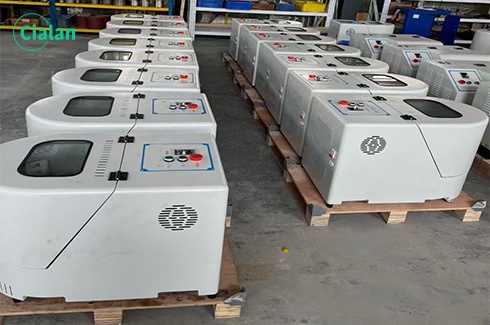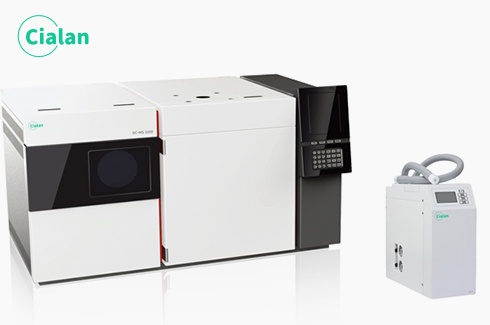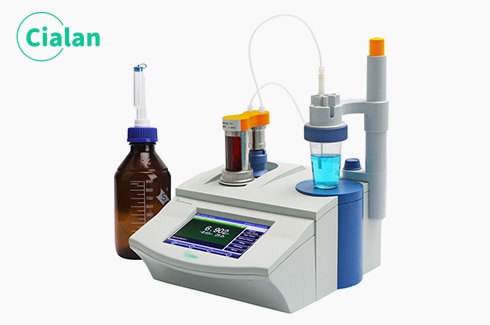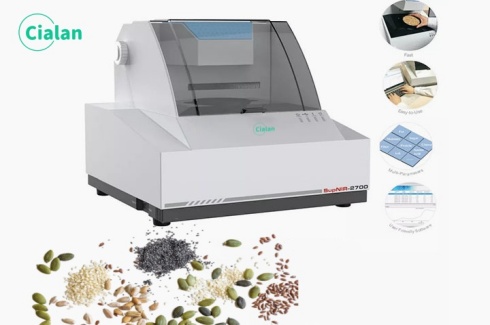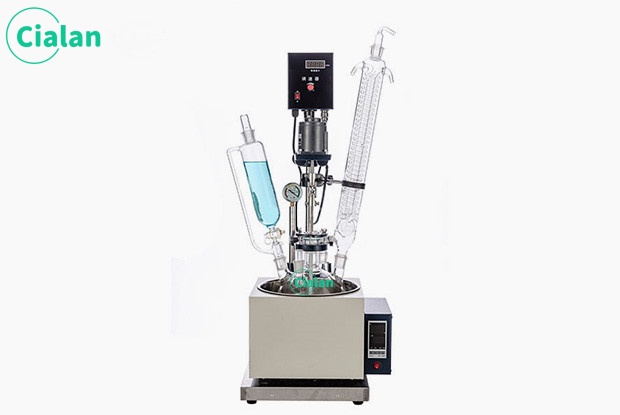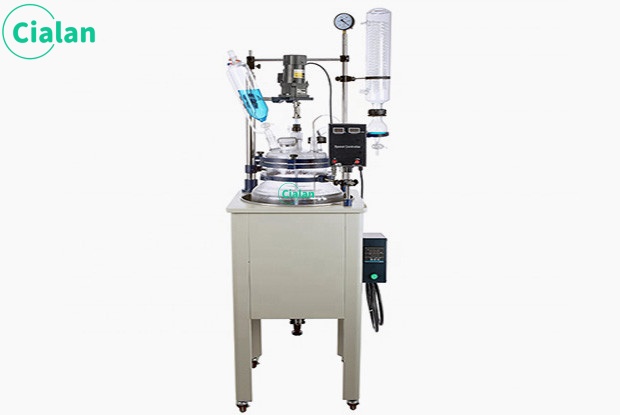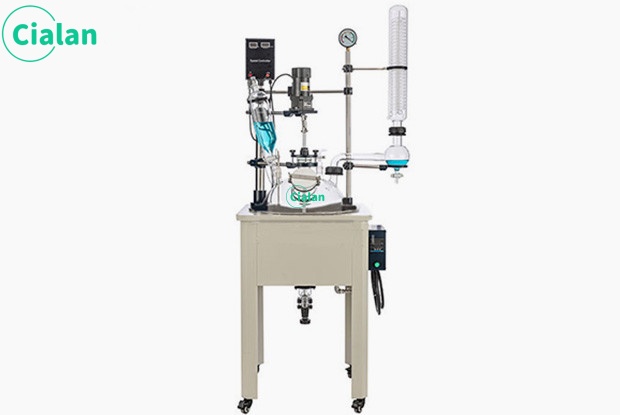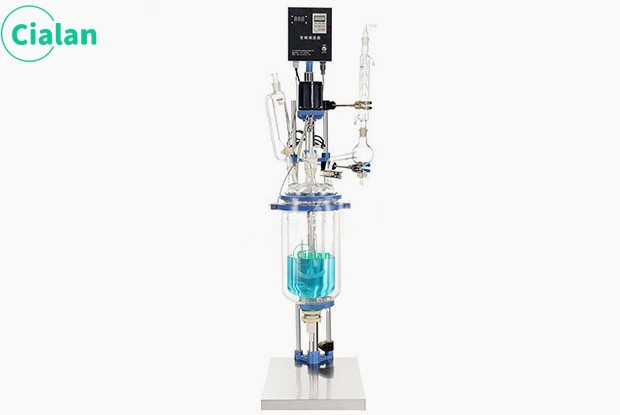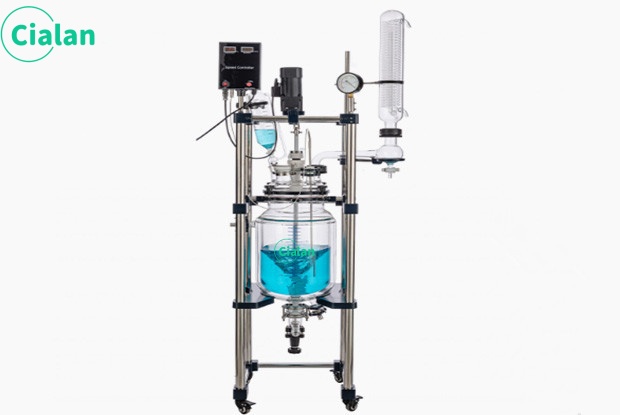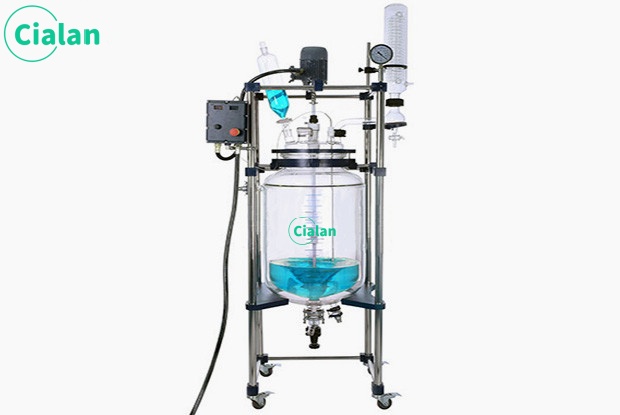Working principle and application of glass reactor
Introduction.
Glass reactor is the ideal equipment for the modernization of scientific small sample experiments, biopharmaceuticals and new materials synthesis, which is more widely used in the laboratory. What is the general working principle of glass reactor? Glass reaction kettle in the set constant temperature conditions, in a closed container, at atmospheric pressure or negative pressure for stirring, reaction, and can control the reaction solution evaporation and reflux. Generally there are single-layer glass reactor, double-layer glass reactor, three-layer glass reactor , and elevating and rotary glass reactor.
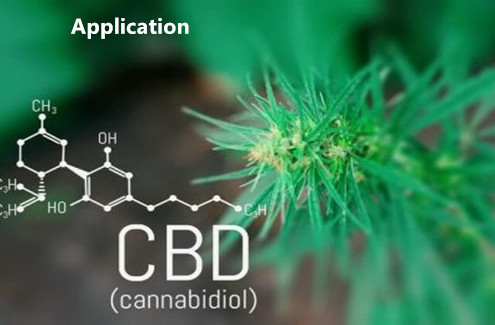
Application and working principle of single-layer glass reactor
It can be provided to do high-temperature reaction (the highest temperature can reach 300 ℃); can also be pumped into the vacuum, so as to do negative pressure reaction. Single-layer glass reactor can carry out various solvent synthesis reactions under constant temperature conditions, the reaction part of the instrument is a fully sealed structure that can be manipulated, and it can continuously inhale various liquids and gases under negative pressure, and it can also be used for refluxing or distillation at different temperatures.
The working principle of single-layer glass reactor is: through the silver film heating plate on the reaction kettle body direct heating, so that the materials in the reaction kettle for constant temperature heating, and can provide stirring. The materials are reacted in the reactor, and the evaporation and reflux of the reaction solution can be controlled. After the reaction, the kettle cover and motor part of single-layer glass reaction kettle are mechanically lifted and lowered (optional electric lifting and lowering), and the kettle body can be rotated by 360 degrees to facilitate the dumping of materials out of the kettle, which is extremely convenient to operate. It is the ideal equipment for the modernization of small samples, pilot experiments, biopharmaceutical and new material synthesis.
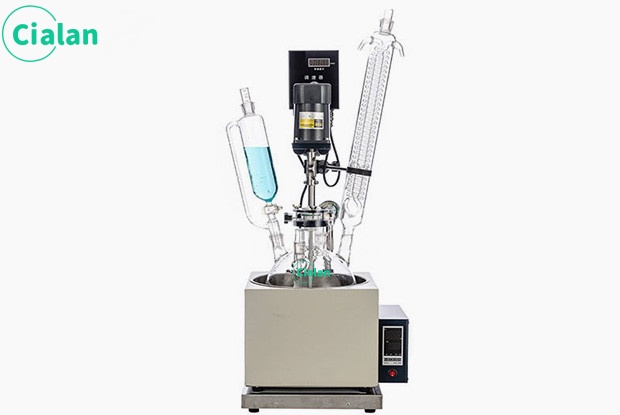
Application and working principle of double-layer glass reactor
Interlayer can be provided to do high temperature reaction (the highest temperature can reach 300 ℃), also can do low temperature reaction (the lowest temperature can reach -80 ℃); double-layer glass reactor can be vacuumed to do negative pressure reaction. Double-layer glass reactor can do room temperature stirring reaction, high temperature reaction, negative pressure vacuum distillation reaction, separation and extraction, distillation reflux reaction, concentration reaction.
The glass double-layer reactor is designed for double-layer glass, its working principle is: put the reaction solvent into the inner layer of the glass to do stirring reaction, and the interlayer can be connected with different cold and hot sources (frozen liquid, hot water or hot oil) to do circulating heating or cooling reaction. Through the double-layer reaction kettle sandwich, the constant temperature (high or low temperature) hot solvent media or cooling media can be injected to heat or cool the materials in the reaction kettle at constant temperature. At the same time, the reaction can be stirred under atmospheric pressure or negative pressure according to the requirements. The materials are reacted in the reaction kettle, and the evaporation and reflux of the reaction solution can be controlled. After the reaction is finished, the materials can be released from the discharge port at the bottom of the kettle, which makes the operation extremely convenient.

Application and working principle of three-layer glass reactor
Three-layer glass reactor is essentially the same as single-layer and double-layer glass reactor, which is an experimental reaction of distillation, concentration, separation and purification under constant speed, constant force and constant temperature, and is a material synthesizing instrument in the fields of petrochemistry, biopharmaceuticals and so on.
The kettle body of three-layer glass reactor consists of three layers of glass with two sets of interlayers, which can provide stirring function and control the evaporation and reflux of reaction solution. The inner jacket of the triple glass reactor is used for heating or cooling, and the outer jacket is used for vacuuming, so that the cooling or heating temperature of the materials in the kettle can be maintained as much as possible under the vacuum state of the outer jacket. The materials are reacted in the kettle, and after the reaction, the materials are discharged from the PTFE outlet at the bottom of the kettle.
.jpg)
Usage and working principle of elevating and rotating glass reactor
Elevating and rotating glass reactor is mainly used for material distillation, synthesis, concentration and other experiments. The kettle structure is divided into three types: single-layer, double-layer and three-layer. The kettle can be pumped to negative pressure state to meet different experimental conditions.
Elevating glass reactor is on the basis of common reaction kettle, it can make the kettle cover and the part above the cover lift automatically, after the stirring bar leaves the kettle body, the kettle body can be rotated 180 degrees to the left by the handwheel, pouring out the material directly, which is convenient for cleaning the kettle body. It can be integrated with ultrasonic dispersing and emulsifying, PH online detection, PTFE filtering device, automatic control, etc. It supports private customization. Lifting and rotating glass reactor can do stirring reaction by placing reaction solvent in the inner layer, and the mezzanine layer can be circulated by cold and heat source, and the mezzanine layer of glass reactor can be provided to do high temperature reaction (the temperature can be up to 300℃); the glass reactor can also be used to do low temperature reaction (the low temperature can be up to -80℃); and the glass reactor can be pumped with vacuum to do negative pressure reaction. And its unique design makes the test safer and more convenient.
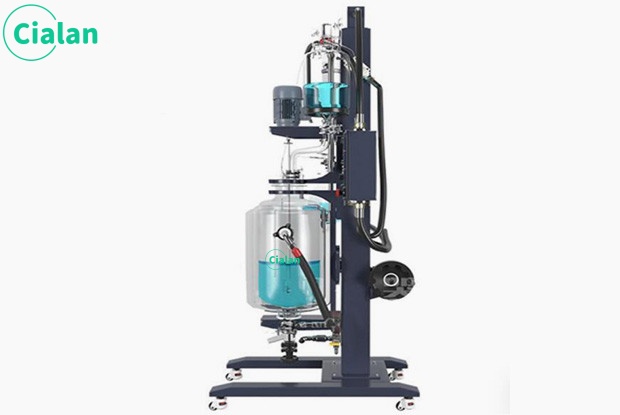
Glass reactor is the ideal equipment for the modernization of scientific small sample experiments, biopharmaceuticals and new materials synthesis, which is more widely used in the laboratory. What is the general working principle of glass reactor? Glass reaction kettle in the set constant temperature conditions, in a closed container, at atmospheric pressure or negative pressure for stirring, reaction, and can control the reaction solution evaporation and reflux. Generally there are single-layer glass reactor, double-layer glass reactor, three-layer glass reactor , and elevating and rotary glass reactor.

Application and working principle of single-layer glass reactor
It can be provided to do high-temperature reaction (the highest temperature can reach 300 ℃); can also be pumped into the vacuum, so as to do negative pressure reaction. Single-layer glass reactor can carry out various solvent synthesis reactions under constant temperature conditions, the reaction part of the instrument is a fully sealed structure that can be manipulated, and it can continuously inhale various liquids and gases under negative pressure, and it can also be used for refluxing or distillation at different temperatures.
The working principle of single-layer glass reactor is: through the silver film heating plate on the reaction kettle body direct heating, so that the materials in the reaction kettle for constant temperature heating, and can provide stirring. The materials are reacted in the reactor, and the evaporation and reflux of the reaction solution can be controlled. After the reaction, the kettle cover and motor part of single-layer glass reaction kettle are mechanically lifted and lowered (optional electric lifting and lowering), and the kettle body can be rotated by 360 degrees to facilitate the dumping of materials out of the kettle, which is extremely convenient to operate. It is the ideal equipment for the modernization of small samples, pilot experiments, biopharmaceutical and new material synthesis.

Application and working principle of double-layer glass reactor
Interlayer can be provided to do high temperature reaction (the highest temperature can reach 300 ℃), also can do low temperature reaction (the lowest temperature can reach -80 ℃); double-layer glass reactor can be vacuumed to do negative pressure reaction. Double-layer glass reactor can do room temperature stirring reaction, high temperature reaction, negative pressure vacuum distillation reaction, separation and extraction, distillation reflux reaction, concentration reaction.
The glass double-layer reactor is designed for double-layer glass, its working principle is: put the reaction solvent into the inner layer of the glass to do stirring reaction, and the interlayer can be connected with different cold and hot sources (frozen liquid, hot water or hot oil) to do circulating heating or cooling reaction. Through the double-layer reaction kettle sandwich, the constant temperature (high or low temperature) hot solvent media or cooling media can be injected to heat or cool the materials in the reaction kettle at constant temperature. At the same time, the reaction can be stirred under atmospheric pressure or negative pressure according to the requirements. The materials are reacted in the reaction kettle, and the evaporation and reflux of the reaction solution can be controlled. After the reaction is finished, the materials can be released from the discharge port at the bottom of the kettle, which makes the operation extremely convenient.

Application and working principle of three-layer glass reactor
Three-layer glass reactor is essentially the same as single-layer and double-layer glass reactor, which is an experimental reaction of distillation, concentration, separation and purification under constant speed, constant force and constant temperature, and is a material synthesizing instrument in the fields of petrochemistry, biopharmaceuticals and so on.
The kettle body of three-layer glass reactor consists of three layers of glass with two sets of interlayers, which can provide stirring function and control the evaporation and reflux of reaction solution. The inner jacket of the triple glass reactor is used for heating or cooling, and the outer jacket is used for vacuuming, so that the cooling or heating temperature of the materials in the kettle can be maintained as much as possible under the vacuum state of the outer jacket. The materials are reacted in the kettle, and after the reaction, the materials are discharged from the PTFE outlet at the bottom of the kettle.
.jpg)
Usage and working principle of elevating and rotating glass reactor
Elevating and rotating glass reactor is mainly used for material distillation, synthesis, concentration and other experiments. The kettle structure is divided into three types: single-layer, double-layer and three-layer. The kettle can be pumped to negative pressure state to meet different experimental conditions.
Elevating glass reactor is on the basis of common reaction kettle, it can make the kettle cover and the part above the cover lift automatically, after the stirring bar leaves the kettle body, the kettle body can be rotated 180 degrees to the left by the handwheel, pouring out the material directly, which is convenient for cleaning the kettle body. It can be integrated with ultrasonic dispersing and emulsifying, PH online detection, PTFE filtering device, automatic control, etc. It supports private customization. Lifting and rotating glass reactor can do stirring reaction by placing reaction solvent in the inner layer, and the mezzanine layer can be circulated by cold and heat source, and the mezzanine layer of glass reactor can be provided to do high temperature reaction (the temperature can be up to 300℃); the glass reactor can also be used to do low temperature reaction (the low temperature can be up to -80℃); and the glass reactor can be pumped with vacuum to do negative pressure reaction. And its unique design makes the test safer and more convenient.



